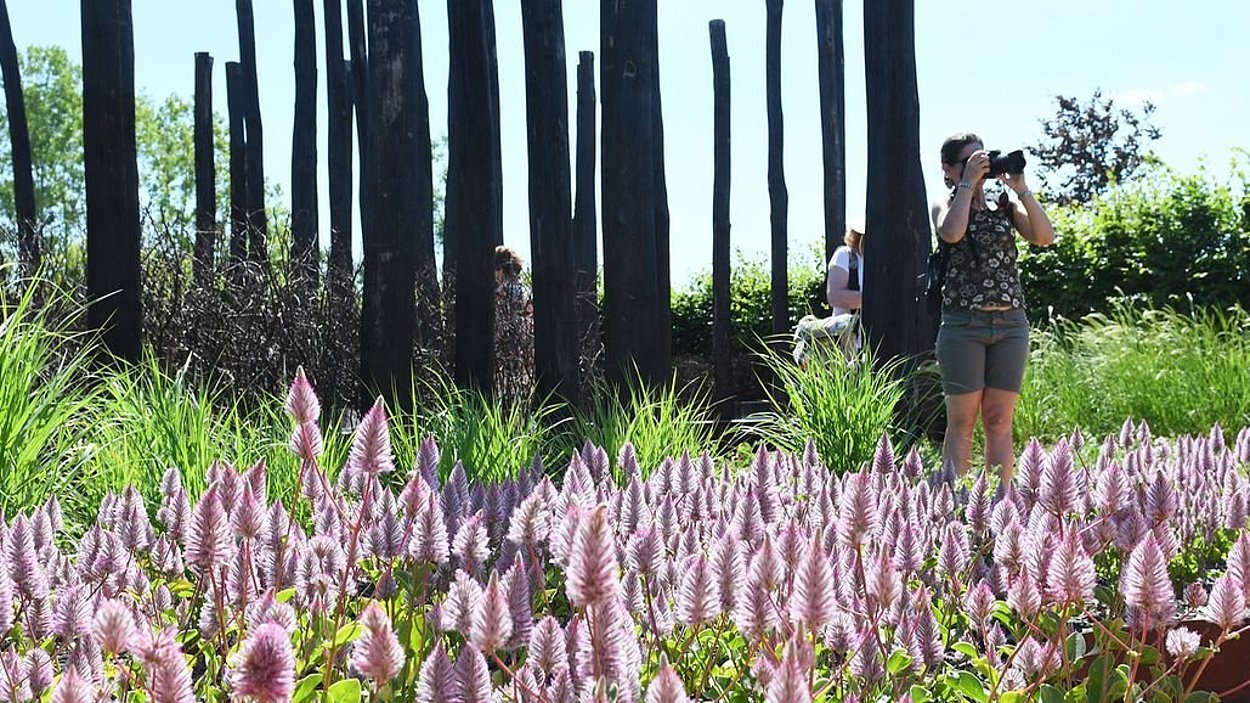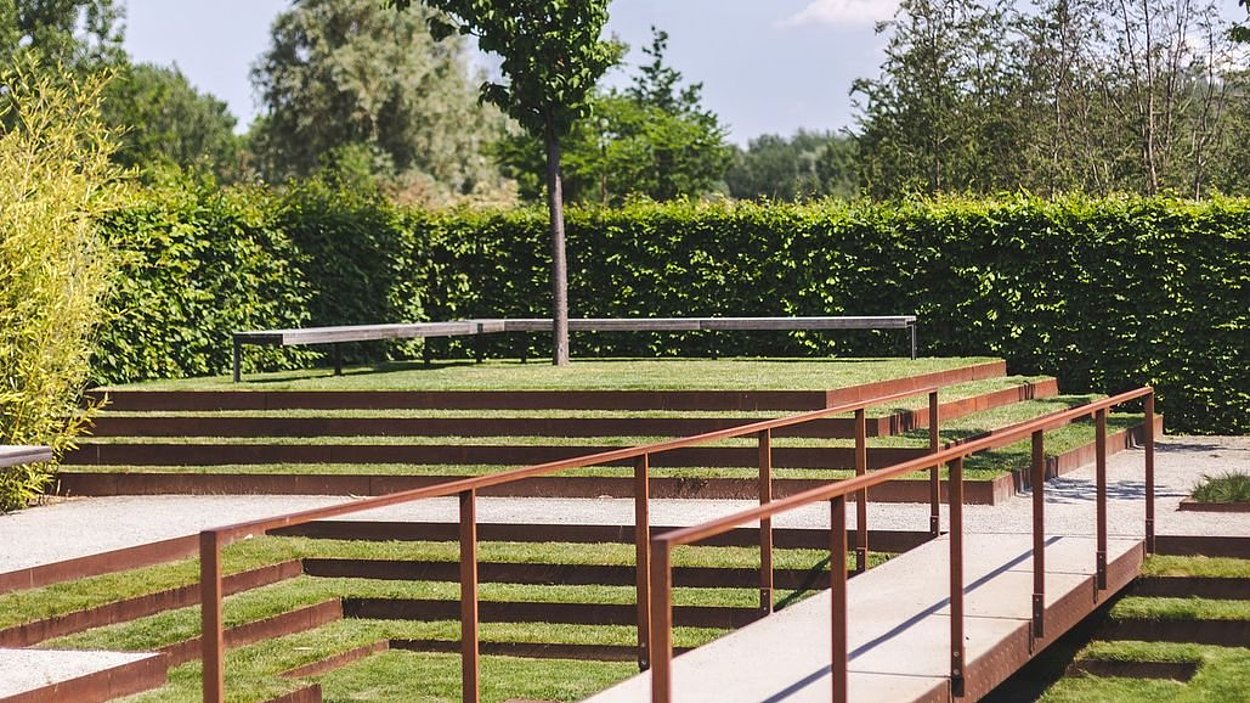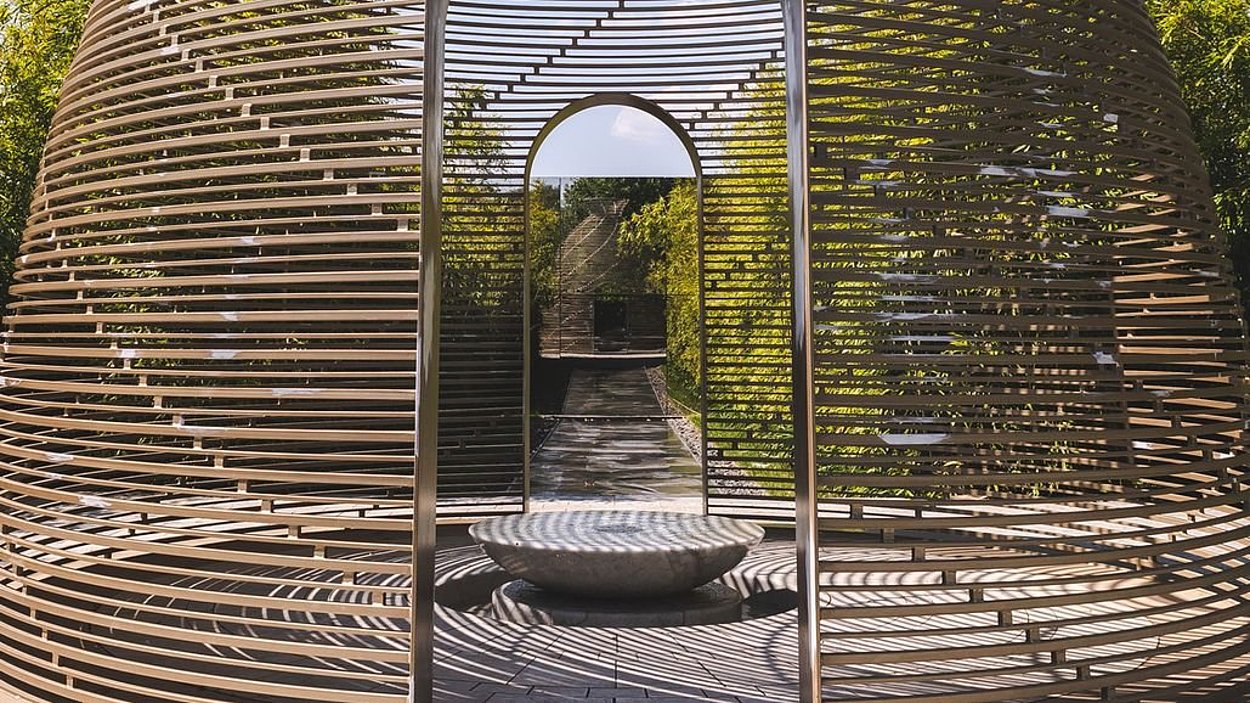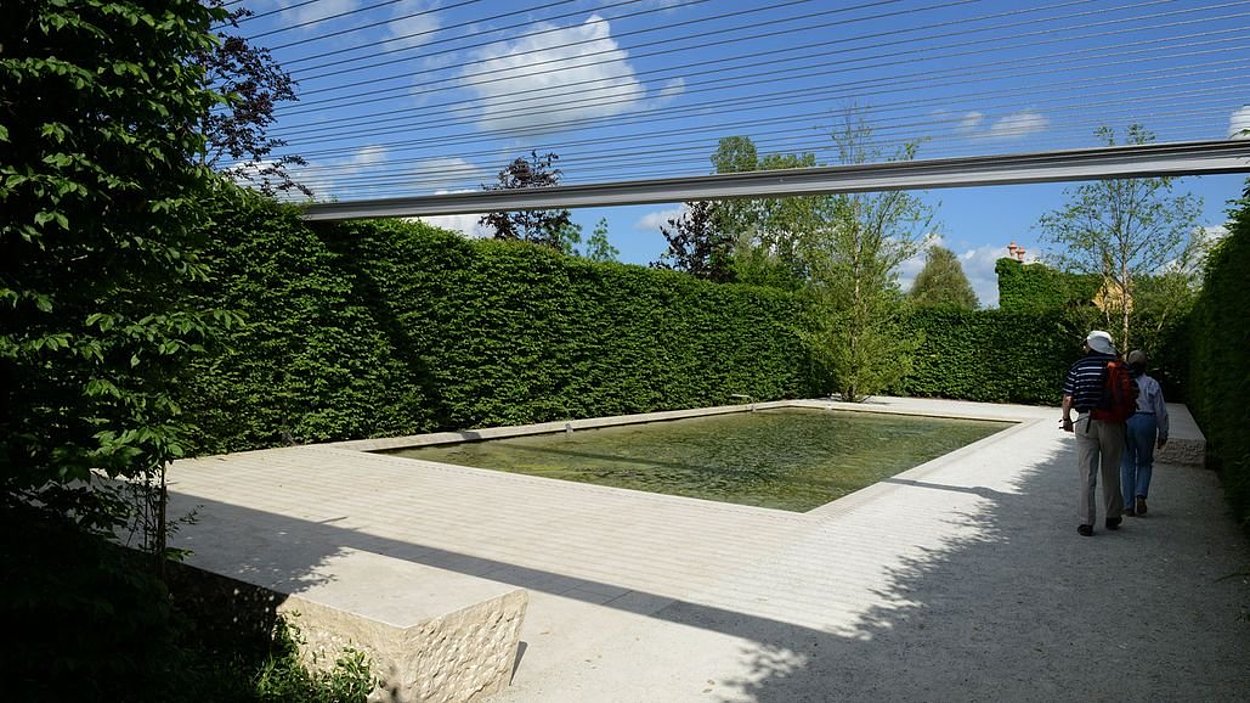Great Britain
From the Beginning of the World
First, plants grow that are flexible and adaptable. Later, trees grow and animals can live in their shade. The animals create a network of trails in the new, lush vegetation. Only then do huts appear.
English landscape architect Tom Stuart-Smith describes the vegetation and colonisation process of the earth. Of course, man could not take over the landscape without outside help: He was helped by the Roman god Vulcan, whose history provides the design concept of the garden. Immerse yourself in the world of mythical fire and experience an extraordinary abundance of flowers of all colours.

„The Garden of Vulcan“
Have you ever wondered why there are forest clearings? Together with the giants, the Roman god of fire, Vulcan, pierced through the forest canopy to supply the blacksmiths with wood. Through this Vulcan laid the foundation for the colonisation of nature by man, who henceforth built and settled down.
The garden cabinet designed by Tom Stuart-Smith features a concrete wall that symbolises man's earlier dwellings. The bench, also made of concrete, symbolises a bunk, and the fire bowl opposite reminds of the mythological origin story that inspired the house. The flooring is also designed as if it had survived from an earlier house. It consists of fine gravel and stone slabs.
Landscape architects Tom Stuart-Smith Ltd. has been in business since 1998. The practice's portfolio includes both large public parks and smaller, private gardens. The practice attaches particular importance to a balance between naturalism and modernity. In addition, Tom Stuart-Smith has designed multiple gardens for London’s annual “Chelsea Flower Show”. Eight of these works were awarded gold medals and three were named as the exhibition’s best gardens. In 2011, the Garden Museum in London honoured his work with the first ever exhibition dedicated to a living English landscape architect.
The Myth of Vulcan
Love, jealousy and revenge: These are the three ingredients of a myth. And the Roman myth of Vulcan, the god of fire and blacksmithing, is no different. Legend has it that Vulcan was not necessarily blessed with beauty at birth, so much so that the gods would start crying with laughter at the sight of him. Juno, his mother, threw him from Olympus out of anger. To avenge his mother, he created a golden throne for her, capturing her with invisible bonds. In exchange for her freedom, he demanded his reinstatement as a god. Jupiter agreed and gave him the beautiful Venus, who however quickly turned out to be a very unfaithful wife. He wove an invisible net in which he held Venus and her lover, Mars, to expose them to the other gods. The resounding laughter of the gods was Vulcan's revenge.









